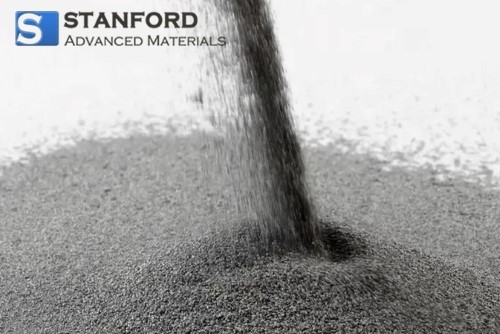Case Study: Empowering Space Innovation Aluminum Alloy Powder
Introduction
As humanity expands into space, the need for materials that meet the strict requirements of space exploration increases. Aluminium alloy powder is used because it offers a combination of strength, reduced weight and effective heat management. This investigation details its applications in space technology and provides quantitative data regarding its performance.
 [1]
[1]
Figure 1. Space Science
Unlocking the Potential of Aluminium Alloy Powder
Aluminium alloy powder is applied widely because it has quantifiable strength, high corrosion resistance and good thermal conductivity. Its properties in space include:
Lightweight construction: The low density is essential for reducing overall mass, thereby improving launch efficiency and manoeuvres.
Strength and durability: Despite its low weight, the alloy provides measured strength capable of withstanding extreme conditions.
Thermal management: The high thermal conductivity allows effective heat dissipation from spacecraft components.
Corrosion resistance: The inherent resistance to corrosion is critical for extended use in space, where no protective atmosphere exists.

Figure 2. Aluminium Alloy Powder
Space Applications of Aluminium Alloy Powder
Aluminium alloys are used in the manufacture of various structural components for spacecraft. They form frameworks, panels and support structures. They are used in the construction of payload fairings and the main structure of launch vehicles. In addition, they are employed in producing heat shields and coolers for managing thermal loads during re-entry and dissipating heat from onboard equipment. The material is also used in additive manufacturing (3D printing) to produce precisely measured and customised components for space missions.
Case Study: Aluminium Alloy Powder for Space Applications
--The Challenge
Some customers required 7075 aluminium powder suitable for space applications. SAM evaluated technical specifications and different use cases. It recommended a particle size below 45 micrometres to ensure flowability and processing consistency.
--The Solution
The following potential applications were identified:
Spacecraft components: Aluminium 7075 powder is used to manufacture structural elements, casings and connectors for spacecraft. The high strength-to-weight ratio reduces overall mass, thereby increasing spacecraft efficiency and payload capacity.
Engine parts: The 7075 powder is processed into engine components, including combustion chamber casings and chamber walls.
Conductive components: Given the importance of thermal and electrical conduction in space, Aluminium 7075 powder is employed in producing conductive parts such as heat sinks and electronic housings. These components ensure efficient thermal dissipation and reliable transmission of electrical signals.
--Results
By using the specified particle size and the determined applications, Aluminium 7075 powder plays a key role in advancing space technology. Its ability to produce lightweight and durable components facilitates the development of spacecraft, propulsion systems and conductive devices required for space research.
Conclusion
In summary, Aluminium alloy powder is indispensable in the extreme environment of space because of its low density, measurable strength, efficient thermal management and corrosion resistance. Stanford Advanced Materials (SAM) has extensive experience in producing and supplying high-quality 7075 aluminium alloy powder. Please contact us if you are interested.
Reference:
[1] Hochschule für Ingenieurwesen. Space Sciences and Engineering. College of Engineering Miami, accessed on 15/08/2023, from https://www.coe.miami.edu/research/strategic-thrusts/space-sciences-and-engineering/index.html

 Bars
Bars
 Beads & Spheres
Beads & Spheres
 Bolts & Nuts
Bolts & Nuts
 Crucibles
Crucibles
 Discs
Discs
 Fibers & Fabrics
Fibers & Fabrics
 Films
Films
 Flake
Flake
 Foams
Foams
 Foil
Foil
 Granules
Granules
 Honeycombs
Honeycombs
 Ink
Ink
 Laminate
Laminate
 Lumps
Lumps
 Meshes
Meshes
 Metallised Film
Metallised Film
 Plate
Plate
 Powders
Powders
 Rod
Rod
 Sheets
Sheets
 Single Crystals
Single Crystals
 Sputtering Target
Sputtering Target
 Tubes
Tubes
 Washer
Washer
 Wires
Wires
 Converters & Calculators
Converters & Calculators
 Chin Trento
Chin Trento



